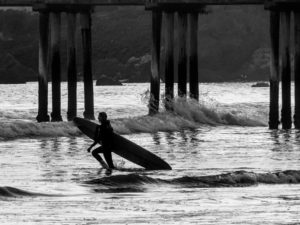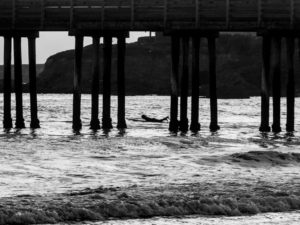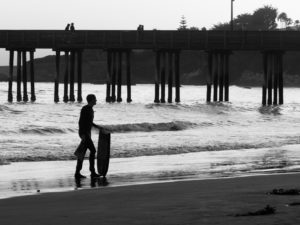For me, Washington D.C. is all about the buildings. In my world of keywording, buildings also include monuments, bridges, and memorials. Steeped in history, full of stories, iconic, architecture, and design all catch my eye. I couldn’t get enough. Here they are, in no particular order.
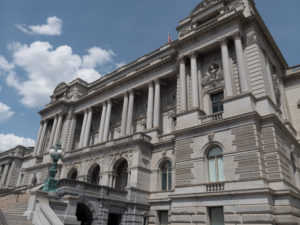 The Library of Congress was NOT what I pictured it to be. From what we saw it was much more a museum than a library. Apparently, it is the official research library that serves the United States Congress and is the de facto national library of the United States. It is the oldest federal cultural institution in the country and is one of the largest libraries in the world. Its collections are universal, not limited by subject, format, or national boundary, and include research materials from all parts of the world and in more than 470 languages. Who knew?
The Library of Congress was NOT what I pictured it to be. From what we saw it was much more a museum than a library. Apparently, it is the official research library that serves the United States Congress and is the de facto national library of the United States. It is the oldest federal cultural institution in the country and is one of the largest libraries in the world. Its collections are universal, not limited by subject, format, or national boundary, and include research materials from all parts of the world and in more than 470 languages. Who knew?
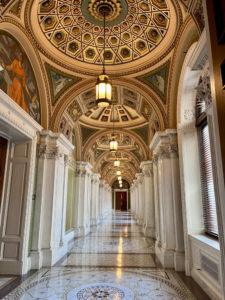
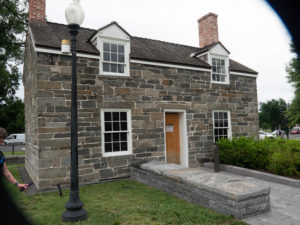 We stumbled across this building on our way to a March for our Lives rally. Excluding the White House, the Lockkeeper’s House is the oldest building on the National Mall, built in 1837.
We stumbled across this building on our way to a March for our Lives rally. Excluding the White House, the Lockkeeper’s House is the oldest building on the National Mall, built in 1837.
The building dates to a period when this area was a wharf and was the location of a section of the Washington City Canal, which connected the Potomac and Anacostia rivers. Here, an eastward extension of the Chesapeake and Ohio Canal met the Potomac River and the Washington City Canal at a canal lock.
The 350-square-foot house served the canal lock keeper, who collected tolls, recorded commerce, maintained the canal, and managed traffic.
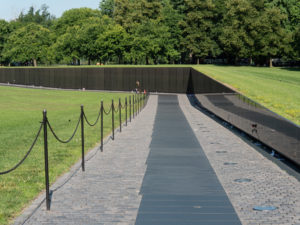 The Vietnam Memorial was powerful. The names on the Wall, originally numbering 57,939 when it was dedicated in 1982, are listed in the chronological order of the casualty dates. It’s interesting how short the wall is from the early days of the war and startling how tall it gets in the middle. Additional names have since been added and as of May 2018, there were 58,320 names. The number of names on the wall is different from the official number of U.S. Vietnam War deaths, which is 58,220 as of May 2018.
The Vietnam Memorial was powerful. The names on the Wall, originally numbering 57,939 when it was dedicated in 1982, are listed in the chronological order of the casualty dates. It’s interesting how short the wall is from the early days of the war and startling how tall it gets in the middle. Additional names have since been added and as of May 2018, there were 58,320 names. The number of names on the wall is different from the official number of U.S. Vietnam War deaths, which is 58,220 as of May 2018.
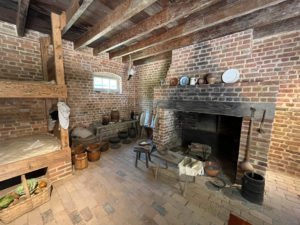
Mount Vernon was a beautiful way to spend an afternoon. The main building was under renovation so we wandered the grounds. It became less beautiful as we entered the slave quarters and realized how many people were owned to make these grounds a working farm back in the day. The above image is a room of the restored slave quarters.
The plantation is on the banks of the Potomac River in Fairfax County, Virginia, just south of Washington, D.C.
The Washington family acquired land in the area in 1674. Around 1734, the family embarked on an expansion of its estate that continued under George Washington, who began leasing the estate in 1754 before becoming its sole owner in 1761.
In 1858, the house’s historical importance was recognized and it was saved from ruin by the Mount Vernon Ladies Association; this philanthropic organization acquired it together with part of the Washington property estate. Escaping the damage suffered by many plantation houses during the American Civil War, Mount Vernon was restored.
Mount Vernon was designated a National Historic Landmark in 1960 and is listed on the National Register of Historic Places. It is still owned and maintained in trust by the Mount Vernon Ladies Association and is open every day of the year. Allowing the public to see the estate is not an innovation, but part of an over 200-year-old tradition started by George Washington himself. In 1794 he wrote: “I have no objection to any sober or orderly person’s gratifying their curiosity in viewing the buildings, Gardens, &ca. about Mount Vernon.”
This is an image of the lower floor of a round barn found on the property. It was invented to have hay laid out on the above floor, have horses walk on it, and ground it up to have it fall through to the bottom floor and be swept up and used. It was cutting-edge technology back then.
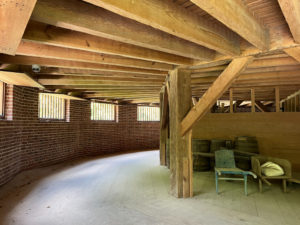
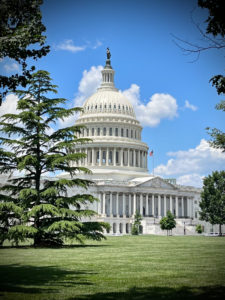 The Capital is located on Capitol Hill at the eastern end of the National Mall. Though no longer at the geographic center of the federal district, the Capitol forms the origin point for the district’s street-numbering system and the district’s four quadrants.
The Capital is located on Capitol Hill at the eastern end of the National Mall. Though no longer at the geographic center of the federal district, the Capitol forms the origin point for the district’s street-numbering system and the district’s four quadrants.
Central sections of the present building were completed in 1800. These were partly destroyed in the 1814 burning of Washington, then were fully restored within five years. The building was later enlarged by extending the wings for the chambers for the bicameral legislature, the House of Representatives in the south wing, and the Senate in the north wing. The massive dome was completed around 1866 just after the American Civil War.
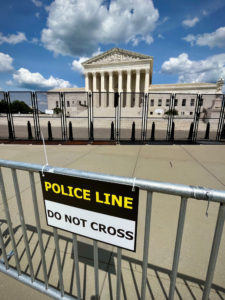 The Supreme Court Building also referred to as “The Marble Palace,” serves as the official workplace of the Chief Justice of the United States and the eight Associate Justices of the Supreme Court. It is located in the block immediately east of the United States Capitol and north of the Library of Congress. On May 4, 1987, the Supreme Court Building was designated a National Historic Landmark.
The Supreme Court Building also referred to as “The Marble Palace,” serves as the official workplace of the Chief Justice of the United States and the eight Associate Justices of the Supreme Court. It is located in the block immediately east of the United States Capitol and north of the Library of Congress. On May 4, 1987, the Supreme Court Building was designated a National Historic Landmark.
The proposal for a separate building for the Supreme Court was suggested in 1912 by President William Howard Taft, who became Chief Justice in 1921. In 1929, Taft successfully argued for the creation of the new building but did not live to see it built. Physical construction began in 1932 and was officially completed in 1935 under the guidance of Chief Justice Charles Evans Hughes, Taft’s successor.
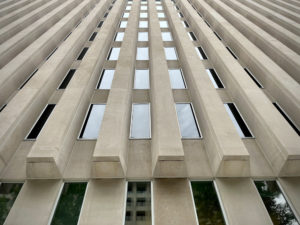 I don’t remember what this building is but we got out of the car, I looked up and saw this…so I SHOT it.
I don’t remember what this building is but we got out of the car, I looked up and saw this…so I SHOT it.
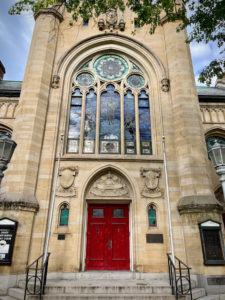
Beautiful architecture was everywhere, be it churches, office buildings, or homes, it was everywhere.
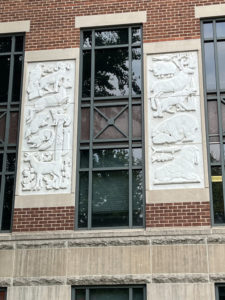
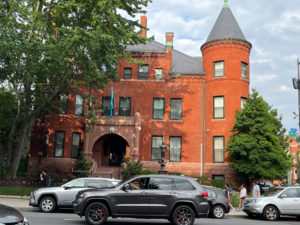 Walking from one place to another, outside of the National Mall, we would come across random buildings like the Embassy of Kazakstan.
Walking from one place to another, outside of the National Mall, we would come across random buildings like the Embassy of Kazakstan.
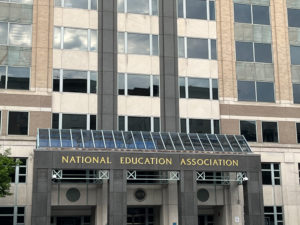 The National Education Association.
The National Education Association.
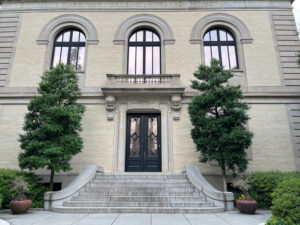 The National Geographic Society.
The National Geographic Society.
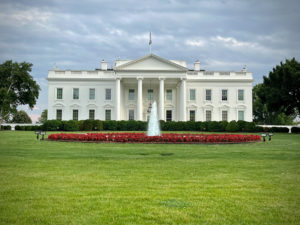 An iPhone picture of the White House. Some days you could get right up to the gate and some days not. Today was a good day.
An iPhone picture of the White House. Some days you could get right up to the gate and some days not. Today was a good day.
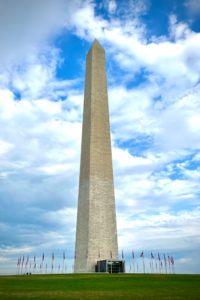 The Washington Monument’s construction began in 1848 and was halted for a period of 23 years, from 1854 to 1877 due to a lack of funds, a struggle for control over the Washington National Monument Society, and the American Civil War. It was built to commemorate George Washington, once commander-in-chief of the Continental Army (1775–1784) in the American Revolutionary War and the first President of the United States (1789–1797). Located almost due east of the Reflecting Pool and the Lincoln Memorial, the monument, made of marble, granite, and bluestone gneiss, is both the world’s tallest predominantly stone structure and the world’s tallest obelisk at 555 feet 5+1⁄8 inches (169.294 m) tall, according to the National Park Service (measured 1884). It is the tallest monumental column in the world if all are measured above their pedestrian entrances. The cornerstone was laid on July 4, 1848; the first stone was laid atop the unfinished stump on August 7, 1880; the capstone was set on December 6, 1884; the completed monument was dedicated on February 21, 1885; and officially opened October 9, 1888.
The Washington Monument’s construction began in 1848 and was halted for a period of 23 years, from 1854 to 1877 due to a lack of funds, a struggle for control over the Washington National Monument Society, and the American Civil War. It was built to commemorate George Washington, once commander-in-chief of the Continental Army (1775–1784) in the American Revolutionary War and the first President of the United States (1789–1797). Located almost due east of the Reflecting Pool and the Lincoln Memorial, the monument, made of marble, granite, and bluestone gneiss, is both the world’s tallest predominantly stone structure and the world’s tallest obelisk at 555 feet 5+1⁄8 inches (169.294 m) tall, according to the National Park Service (measured 1884). It is the tallest monumental column in the world if all are measured above their pedestrian entrances. The cornerstone was laid on July 4, 1848; the first stone was laid atop the unfinished stump on August 7, 1880; the capstone was set on December 6, 1884; the completed monument was dedicated on February 21, 1885; and officially opened October 9, 1888.
We never did secure tickets to go up in it. Next time.
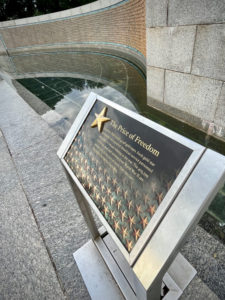 The World War II Memorial was stunning. But this plaque was possibly the most important part of the memorial. It is the Freedom Wall. It explains the price of freedom in very real terms. The wall holds 4,048 gold stars you can see behind the sign to the left. Each star represents one hundred American service personnel who died or remain missing in the war. The 405,399 Americans dead and missing from World War II are second only to the loss of more than 620,000 Americans during our Civil War. And THAT only includes our country. And only service members. Let that sink in for a minute.
The World War II Memorial was stunning. But this plaque was possibly the most important part of the memorial. It is the Freedom Wall. It explains the price of freedom in very real terms. The wall holds 4,048 gold stars you can see behind the sign to the left. Each star represents one hundred American service personnel who died or remain missing in the war. The 405,399 Americans dead and missing from World War II are second only to the loss of more than 620,000 Americans during our Civil War. And THAT only includes our country. And only service members. Let that sink in for a minute.
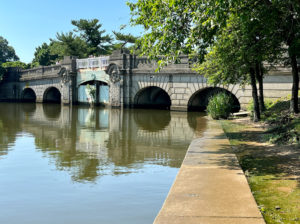
This is a super cute little bridge along the waterway of the Jefferson Memorial whose pillars you can see below.
I found this quote on the Southeast wall to be very pertinent to today’s politics: “I am not an advocate for frequent changes in laws and constitutions, but laws and institutions must go hand in hand with the progress of the human mind. As that becomes more developed, more enlightened, as new discoveries are made, new truths discovered and manners and opinions change, with the change of circumstances, institutions must advance also to keep pace with the times. We might as well require a man to wear still the coat which fitted him when a boy as civilized society to remain ever under the regimen of their barbarous ancestors.” I have more to say but I’ll stop there. 😉
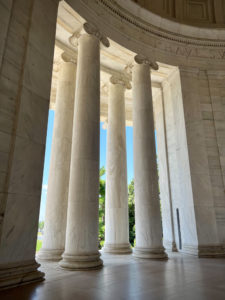
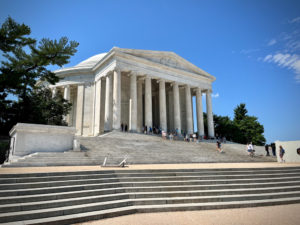
The Lincoln Memorial was dedicated in May 1922. It has always been a major tourist attraction and since the 1930s has sometimes been a symbolic center focused on race relations.
The memorial has been the site of many famous speeches, including Martin Luther King Jr.’s “I Have a Dream” speech delivered on August 28, 1963, during the rally at the end of the March on Washington for Jobs and Freedom.
The memorial is open to the public 24 hours a day, and more than 7 million people visit it annually.
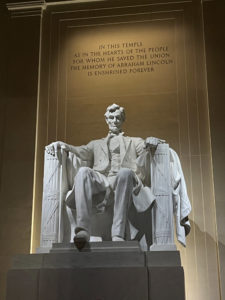
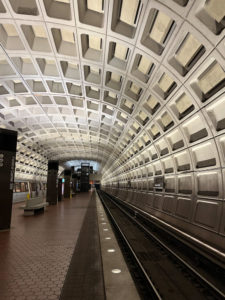 Even the Metro station is kinda cool inside.
Even the Metro station is kinda cool inside.
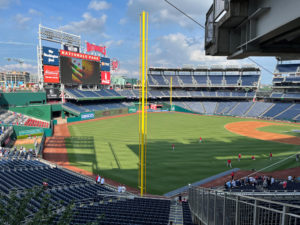 We went to a Washington Nationals Major League Baseball game with our friends. I even ate a hot dog.
We went to a Washington Nationals Major League Baseball game with our friends. I even ate a hot dog.
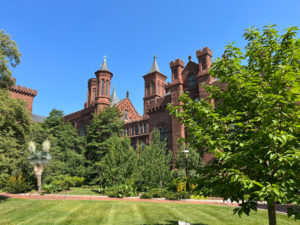 The Smithsonian Institution is legendary. I learned this at an exhibit: “The Smithsonian Institution started with a gift from an 18th-century English scientist named James Smithson who left his fortune to the United States, a country he had never seen. This exhibition looks at the history of the Smithsonian, focusing on its research, museums, and public programs in art, culture, history, and science and the role of the American public in the Smithsonian museums and research.
The Smithsonian Institution is legendary. I learned this at an exhibit: “The Smithsonian Institution started with a gift from an 18th-century English scientist named James Smithson who left his fortune to the United States, a country he had never seen. This exhibition looks at the history of the Smithsonian, focusing on its research, museums, and public programs in art, culture, history, and science and the role of the American public in the Smithsonian museums and research.
The Smithsonian is a partnership between its specialist staff and the American people. ”
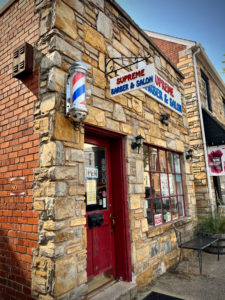
Walking around old Alexandria we ran into some old buildings.
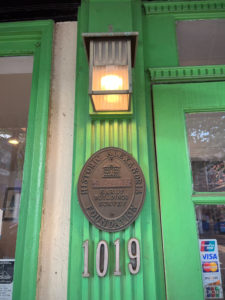
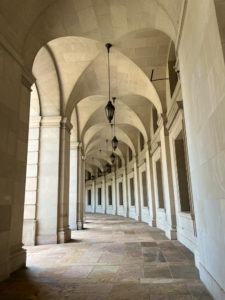 I’m not sure what this building is but we emerged from the underground Metro to this. Stunning.
I’m not sure what this building is but we emerged from the underground Metro to this. Stunning.
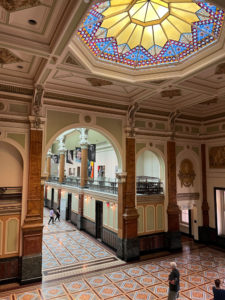 This is the National Portrait Gallery which is full of, you guessed it, portraits! Among other art pieces.
This is the National Portrait Gallery which is full of, you guessed it, portraits! Among other art pieces.
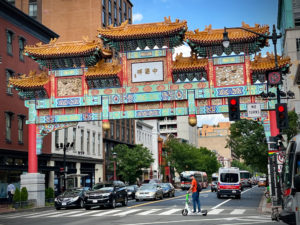 We didn’t go into Chinatown but found one of the entrances to it near the portrait gallery. Again, next time.
We didn’t go into Chinatown but found one of the entrances to it near the portrait gallery. Again, next time.
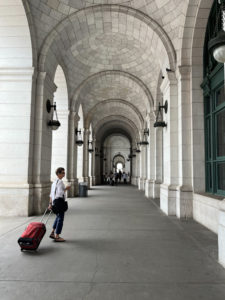 Here’s Ellen at Union Station, on our way to find the Amtrak train that will take us to New York City.
Here’s Ellen at Union Station, on our way to find the Amtrak train that will take us to New York City.
I hope you enjoyed the small sampling of the buildings we encountered on the D.C. portion of our June adventure.
Until next week, Happy Shooting!!
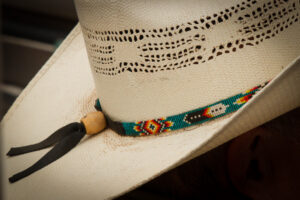 This image was taken near Canyon de Chelly and the beautifully beaded hatband caught my eye more than the hat itself. I was there on an Arizona Highways Photo Workshop and this hat belonged to our guide.
This image was taken near Canyon de Chelly and the beautifully beaded hatband caught my eye more than the hat itself. I was there on an Arizona Highways Photo Workshop and this hat belonged to our guide.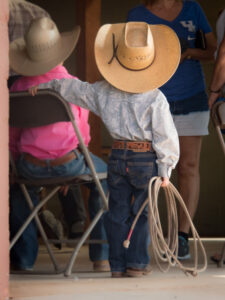 This little roper and his hat were taken at the annual Babbit Ranches Colt Sale held in July.
This little roper and his hat were taken at the annual Babbit Ranches Colt Sale held in July.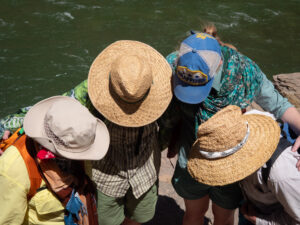 River trip hats are as unique as the individual and a lifesaving part of the needed gear, especially on summer trips through Grand Canyon.
River trip hats are as unique as the individual and a lifesaving part of the needed gear, especially on summer trips through Grand Canyon.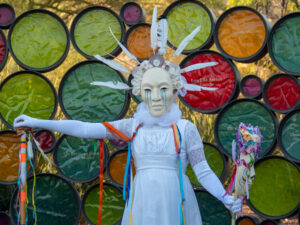 It may be that this “hat” image lies more in the headdress genre but either way, the outfit is magnificent. This image was taken at a Dia de los Muertos celebration at the Phoenix Desert Botanical Gardens in 2019.
It may be that this “hat” image lies more in the headdress genre but either way, the outfit is magnificent. This image was taken at a Dia de los Muertos celebration at the Phoenix Desert Botanical Gardens in 2019.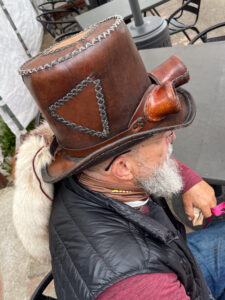 Following a morning at the Bolinas, CA tidepools I encountered this character in town at the local coffee shop. He said he got this leather tophat years ago at a Renaissance Fair. He added the fox tails off the back.
Following a morning at the Bolinas, CA tidepools I encountered this character in town at the local coffee shop. He said he got this leather tophat years ago at a Renaissance Fair. He added the fox tails off the back.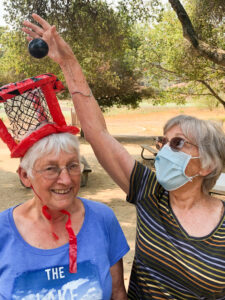 My mom with her basket hat at a family picnic a couple of years ago. Leave it to her sister to slam-dunk her head!
My mom with her basket hat at a family picnic a couple of years ago. Leave it to her sister to slam-dunk her head!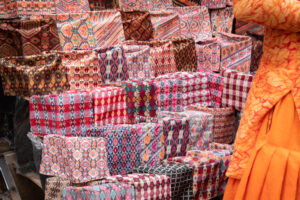
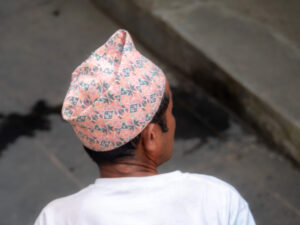
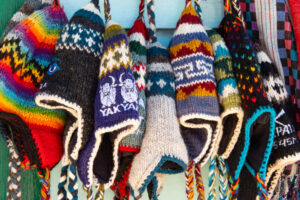 During our 2018 hike to Everest Base Camp, we came across many hats like the ones above for sale and on the heads of many locals as we rose in elevation and the temperatures cooled.
During our 2018 hike to Everest Base Camp, we came across many hats like the ones above for sale and on the heads of many locals as we rose in elevation and the temperatures cooled.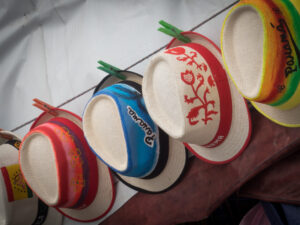 These hats were found in Panama City, Panama in 2017.
These hats were found in Panama City, Panama in 2017.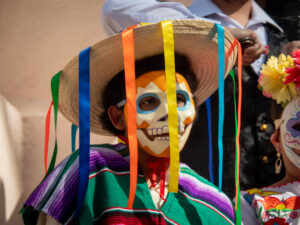
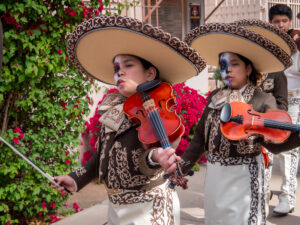
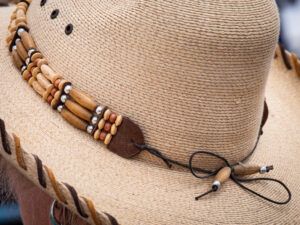 This was another cool hatband on a hat at the Colt Sale near Flagstaff.
This was another cool hatband on a hat at the Colt Sale near Flagstaff. On my one and only trip to Boston, I came across a vendor selling baseball caps. I was amazed at the variety of colors available!
On my one and only trip to Boston, I came across a vendor selling baseball caps. I was amazed at the variety of colors available!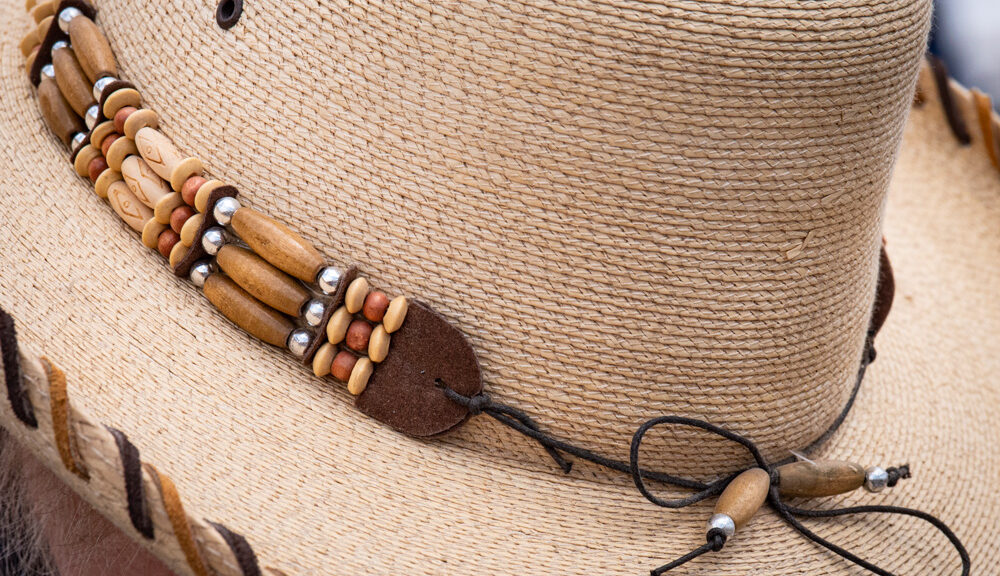
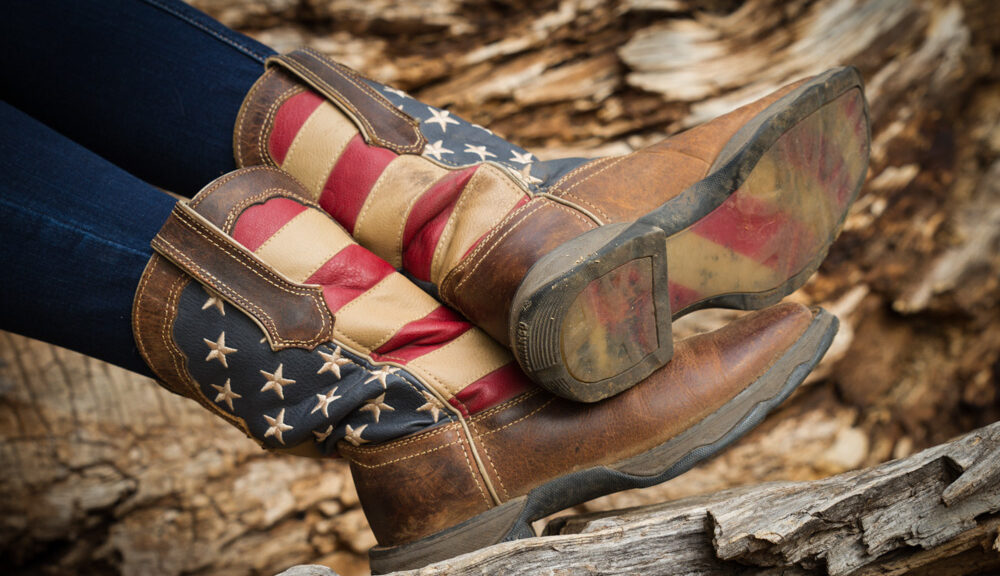
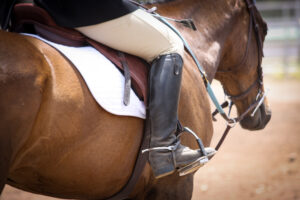 Years ago, 2009 to be exact, I got wind of an English Riding event happening at the local county fairgrounds. As I live ten minutes away, I thought it would be a fun place to photograph something different. I love slipping into sub-cultures that are foreign to me. This was definitely one of those experiences. I’m SO not a horse person.
Years ago, 2009 to be exact, I got wind of an English Riding event happening at the local county fairgrounds. As I live ten minutes away, I thought it would be a fun place to photograph something different. I love slipping into sub-cultures that are foreign to me. This was definitely one of those experiences. I’m SO not a horse person.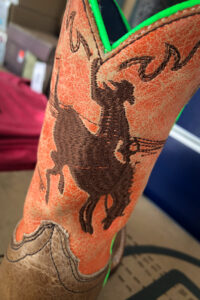 In 2020, my family traveled to Pinedale, WY to say goodbye to the father of my daughters who had passed away the previous November. Nothing could be more “Wyoming” than this pair of kids boots.
In 2020, my family traveled to Pinedale, WY to say goodbye to the father of my daughters who had passed away the previous November. Nothing could be more “Wyoming” than this pair of kids boots.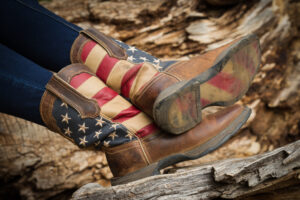 In 2015 I was in Sedona near Red Rock Crossing for a high school senior shoot. My subject had these boots on and as she was getting into position I fired off a shot. What great boots and clearly worn a LOT.
In 2015 I was in Sedona near Red Rock Crossing for a high school senior shoot. My subject had these boots on and as she was getting into position I fired off a shot. What great boots and clearly worn a LOT.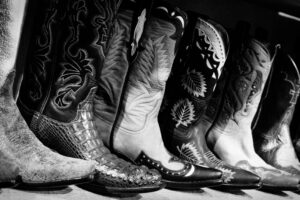
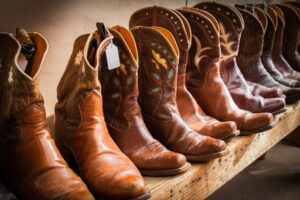
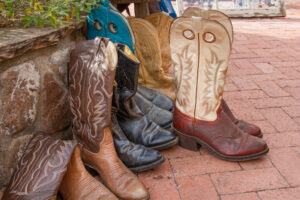
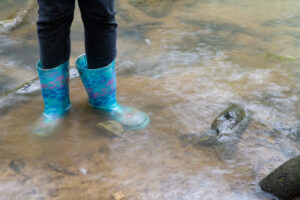 The feet of my niece are in these rain boots as we explore a creek near the family home in Marin County, northern California in 2016.
The feet of my niece are in these rain boots as we explore a creek near the family home in Marin County, northern California in 2016.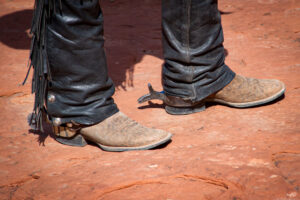 One of my first workshops with Arizona Highways Photo Workshops was in 2014 on a women’s retreat in Sedona. Yes, there were stunning vistas to photograph, but also these great boots of our Jeep Tour guide!
One of my first workshops with Arizona Highways Photo Workshops was in 2014 on a women’s retreat in Sedona. Yes, there were stunning vistas to photograph, but also these great boots of our Jeep Tour guide!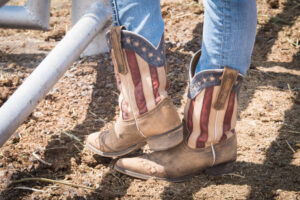
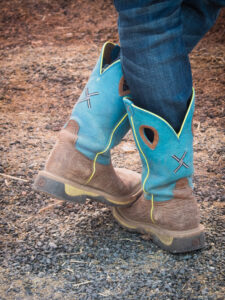

 I flew into El Paso, TX in 2017 for a photo workshop at White Sands, New Mexico. The other photoguide and I had a day in El Paso to wander around and take photos. these boots were being sold down near the border which quite honestly if I didn’t know I was in the United States, It would be easy to mistake my location for a street of shops just over the border.
I flew into El Paso, TX in 2017 for a photo workshop at White Sands, New Mexico. The other photoguide and I had a day in El Paso to wander around and take photos. these boots were being sold down near the border which quite honestly if I didn’t know I was in the United States, It would be easy to mistake my location for a street of shops just over the border.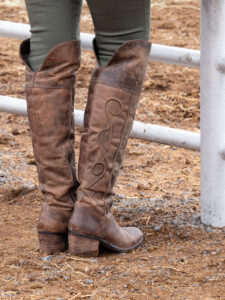 These beautiful boots were at the 2028 Colt Sale.
These beautiful boots were at the 2028 Colt Sale.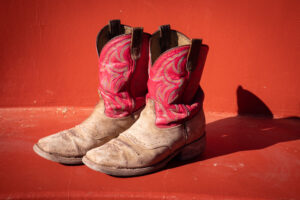 Last but not least, earlier this year I was at the Desert Botanical Gardens in Phoenix with a dear friend and her son doing his high school senior portraits. He had taken off these boots to switch into his dress clothes and set them on the bench. As he was changing under his graduation gown I spotted them in the light with the background and BAM! I have this image. Talk about well-loved boots.
Last but not least, earlier this year I was at the Desert Botanical Gardens in Phoenix with a dear friend and her son doing his high school senior portraits. He had taken off these boots to switch into his dress clothes and set them on the bench. As he was changing under his graduation gown I spotted them in the light with the background and BAM! I have this image. Talk about well-loved boots.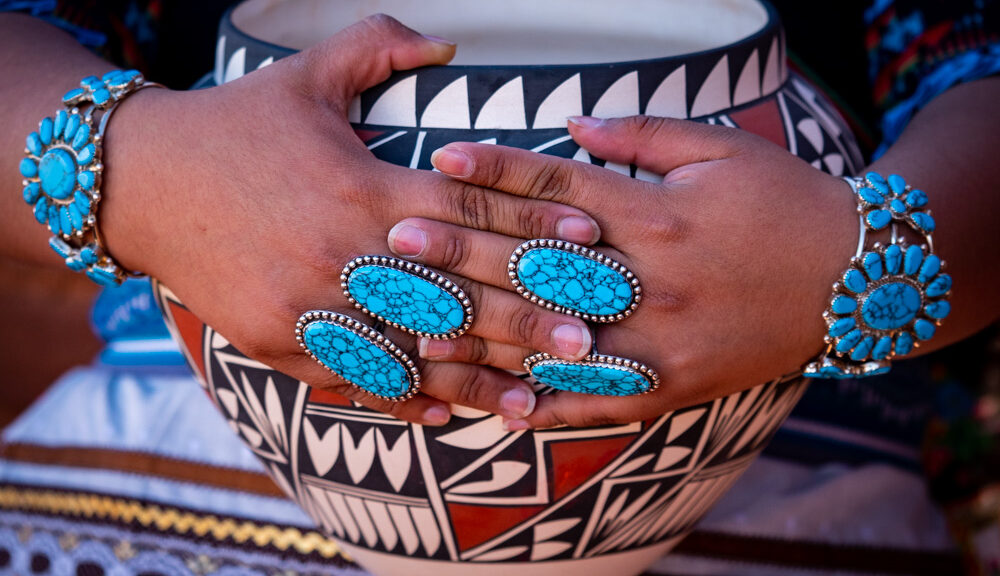
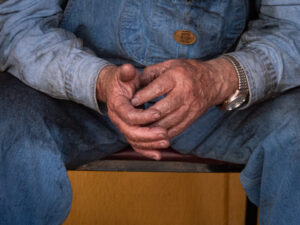 Last September I had the great pleasure of being a photo guide with Arizona Highways Photo Scapes in Chama, New Mexico. They have a small gauge steam engine that runs out of there, similar to the famous Silverton, CO train. These hands belong to a train worker I spotted at our lunch stop. He was sitting and chatting with fellow workers, on break before taking us back to Chama.
Last September I had the great pleasure of being a photo guide with Arizona Highways Photo Scapes in Chama, New Mexico. They have a small gauge steam engine that runs out of there, similar to the famous Silverton, CO train. These hands belong to a train worker I spotted at our lunch stop. He was sitting and chatting with fellow workers, on break before taking us back to Chama.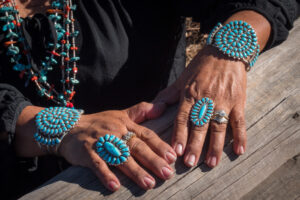 I was doing a family portrait session in Flagstaff one day. Mom/Grandma arrived adorned with this beautiful jewelry. Before we got started I asked her to pose for a quick shot.
I was doing a family portrait session in Flagstaff one day. Mom/Grandma arrived adorned with this beautiful jewelry. Before we got started I asked her to pose for a quick shot.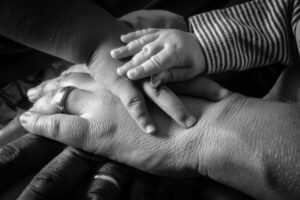 I was visiting my sister and her family in Florida a few years ago shortly after her youngest was born. We did a family shoot and came up with this idea.
I was visiting my sister and her family in Florida a few years ago shortly after her youngest was born. We did a family shoot and came up with this idea.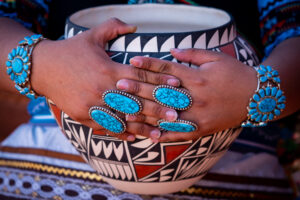 One of my favorite high school senior photo sessions produced this beautiful image.
One of my favorite high school senior photo sessions produced this beautiful image.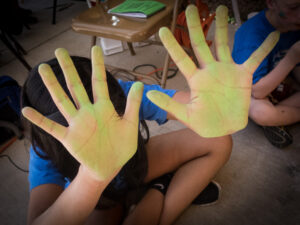 Kids stayed entertained with chalk at a chess tournament when I was coaching and photographing the game at Killip years ago. I walked by and this child didn’t want their picture taken so I photographed the raised hands instead. Thanks, kid! lol
Kids stayed entertained with chalk at a chess tournament when I was coaching and photographing the game at Killip years ago. I walked by and this child didn’t want their picture taken so I photographed the raised hands instead. Thanks, kid! lol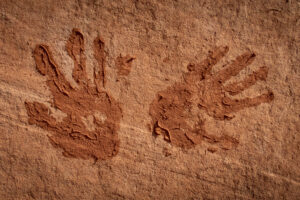 Walking up Antelope Canyon from Lake Powell we came across someone’s muddy hand prints on the sandstone.
Walking up Antelope Canyon from Lake Powell we came across someone’s muddy hand prints on the sandstone.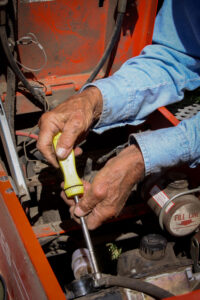 It’s a long story but these are the hands of my brother’s grandfather working on his tractor on his farm in Nebraska.
It’s a long story but these are the hands of my brother’s grandfather working on his tractor on his farm in Nebraska. In 2018 my wife and I flew to Nepal to hike to Everest Base Camp. These hands belong to a local we came across along the way.
In 2018 my wife and I flew to Nepal to hike to Everest Base Camp. These hands belong to a local we came across along the way.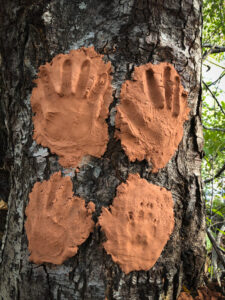 More mud art I found on a tree in Sedona!
More mud art I found on a tree in Sedona!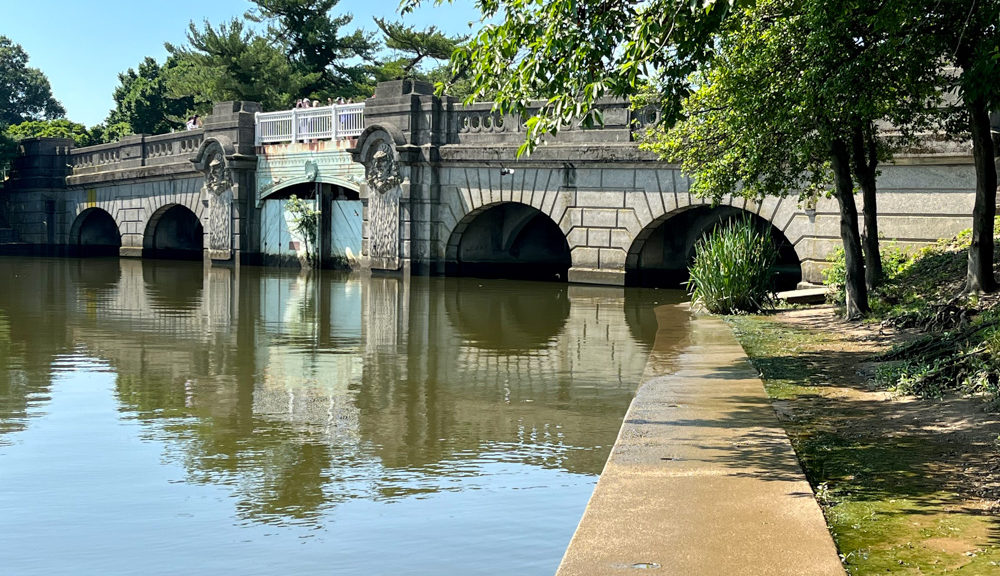
 The Library of Congress was NOT what I pictured it to be. From what we saw it was much more a museum than a library. Apparently, it is the official research library that serves the United States Congress and is the de facto national library of the United States. It is the oldest federal cultural institution in the country and is one of the largest libraries in the world. Its collections are universal, not limited by subject, format, or national boundary, and include research materials from all parts of the world and in more than 470 languages. Who knew?
The Library of Congress was NOT what I pictured it to be. From what we saw it was much more a museum than a library. Apparently, it is the official research library that serves the United States Congress and is the de facto national library of the United States. It is the oldest federal cultural institution in the country and is one of the largest libraries in the world. Its collections are universal, not limited by subject, format, or national boundary, and include research materials from all parts of the world and in more than 470 languages. Who knew?
 We stumbled across this building on our way to a March for our Lives rally. Excluding the White House, the Lockkeeper’s House is the oldest building on the National Mall, built in 1837.
We stumbled across this building on our way to a March for our Lives rally. Excluding the White House, the Lockkeeper’s House is the oldest building on the National Mall, built in 1837. The Vietnam Memorial was powerful. The names on the Wall, originally numbering 57,939 when it was dedicated in 1982, are listed in the chronological order of the casualty dates. It’s interesting how short the wall is from the early days of the war and startling how tall it gets in the middle. Additional names have since been added and as of May 2018, there were 58,320 names. The number of names on the wall is different from the official number of U.S. Vietnam War deaths, which is 58,220 as of May 2018.
The Vietnam Memorial was powerful. The names on the Wall, originally numbering 57,939 when it was dedicated in 1982, are listed in the chronological order of the casualty dates. It’s interesting how short the wall is from the early days of the war and startling how tall it gets in the middle. Additional names have since been added and as of May 2018, there were 58,320 names. The number of names on the wall is different from the official number of U.S. Vietnam War deaths, which is 58,220 as of May 2018.

 The Capital is located on Capitol Hill at the eastern end of the National Mall. Though no longer at the geographic center of the federal district, the Capitol forms the origin point for the district’s street-numbering system and the district’s four quadrants.
The Capital is located on Capitol Hill at the eastern end of the National Mall. Though no longer at the geographic center of the federal district, the Capitol forms the origin point for the district’s street-numbering system and the district’s four quadrants. The Supreme Court Building also referred to as “The Marble Palace,” serves as the official workplace of the Chief Justice of the United States and the eight Associate Justices of the Supreme Court. It is located in the block immediately east of the United States Capitol and north of the Library of Congress. On May 4, 1987, the Supreme Court Building was designated a National Historic Landmark.
The Supreme Court Building also referred to as “The Marble Palace,” serves as the official workplace of the Chief Justice of the United States and the eight Associate Justices of the Supreme Court. It is located in the block immediately east of the United States Capitol and north of the Library of Congress. On May 4, 1987, the Supreme Court Building was designated a National Historic Landmark. I don’t remember what this building is but we got out of the car, I looked up and saw this…so I SHOT it.
I don’t remember what this building is but we got out of the car, I looked up and saw this…so I SHOT it.

 Walking from one place to another, outside of the National Mall, we would come across random buildings like the Embassy of Kazakstan.
Walking from one place to another, outside of the National Mall, we would come across random buildings like the Embassy of Kazakstan. The National Education Association.
The National Education Association. The National Geographic Society.
The National Geographic Society. An iPhone picture of the White House. Some days you could get right up to the gate and some days not. Today was a good day.
An iPhone picture of the White House. Some days you could get right up to the gate and some days not. Today was a good day. The Washington Monument’s construction began in 1848 and was halted for a period of 23 years, from 1854 to 1877 due to a lack of funds, a struggle for control over the Washington National Monument Society, and the American Civil War. It was built to commemorate George Washington, once commander-in-chief of the Continental Army (1775–1784) in the American Revolutionary War and the first President of the United States (1789–1797). Located almost due east of the Reflecting Pool and the Lincoln Memorial, the monument, made of marble, granite, and bluestone gneiss, is both the world’s tallest predominantly stone structure and the world’s tallest obelisk at 555 feet
The Washington Monument’s construction began in 1848 and was halted for a period of 23 years, from 1854 to 1877 due to a lack of funds, a struggle for control over the Washington National Monument Society, and the American Civil War. It was built to commemorate George Washington, once commander-in-chief of the Continental Army (1775–1784) in the American Revolutionary War and the first President of the United States (1789–1797). Located almost due east of the Reflecting Pool and the Lincoln Memorial, the monument, made of marble, granite, and bluestone gneiss, is both the world’s tallest predominantly stone structure and the world’s tallest obelisk at 555 feet  The World War II Memorial was stunning. But this plaque was possibly the most important part of the memorial. It is the Freedom Wall. It explains the price of freedom in very real terms. The wall holds 4,048 gold stars you can see behind the sign to the left. Each star represents one hundred American service personnel who died or remain missing in the war. The 405,399 Americans dead and missing from World War II are second only to the loss of more than 620,000 Americans during our Civil War. And THAT only includes our country. And only service members. Let that sink in for a minute.
The World War II Memorial was stunning. But this plaque was possibly the most important part of the memorial. It is the Freedom Wall. It explains the price of freedom in very real terms. The wall holds 4,048 gold stars you can see behind the sign to the left. Each star represents one hundred American service personnel who died or remain missing in the war. The 405,399 Americans dead and missing from World War II are second only to the loss of more than 620,000 Americans during our Civil War. And THAT only includes our country. And only service members. Let that sink in for a minute.



 Even the Metro station is kinda cool inside.
Even the Metro station is kinda cool inside. We went to a Washington Nationals Major League Baseball game with our friends. I even ate a hot dog.
We went to a Washington Nationals Major League Baseball game with our friends. I even ate a hot dog. The Smithsonian Institution is legendary. I learned this at an exhibit: “The Smithsonian Institution started with a gift from an 18th-century English scientist named James Smithson who left his fortune to the United States, a country he had never seen. This exhibition looks at the history of the Smithsonian, focusing on its research, museums, and public programs in art, culture, history, and science and the role of the American public in the Smithsonian museums and research.
The Smithsonian Institution is legendary. I learned this at an exhibit: “The Smithsonian Institution started with a gift from an 18th-century English scientist named James Smithson who left his fortune to the United States, a country he had never seen. This exhibition looks at the history of the Smithsonian, focusing on its research, museums, and public programs in art, culture, history, and science and the role of the American public in the Smithsonian museums and research.

 I’m not sure what this building is but we emerged from the underground Metro to this. Stunning.
I’m not sure what this building is but we emerged from the underground Metro to this. Stunning. This is the National Portrait Gallery which is full of, you guessed it, portraits! Among other art pieces.
This is the National Portrait Gallery which is full of, you guessed it, portraits! Among other art pieces. We didn’t go into Chinatown but found one of the entrances to it near the portrait gallery. Again, next time.
We didn’t go into Chinatown but found one of the entrances to it near the portrait gallery. Again, next time. Here’s Ellen at Union Station, on our way to find the Amtrak train that will take us to New York City.
Here’s Ellen at Union Station, on our way to find the Amtrak train that will take us to New York City.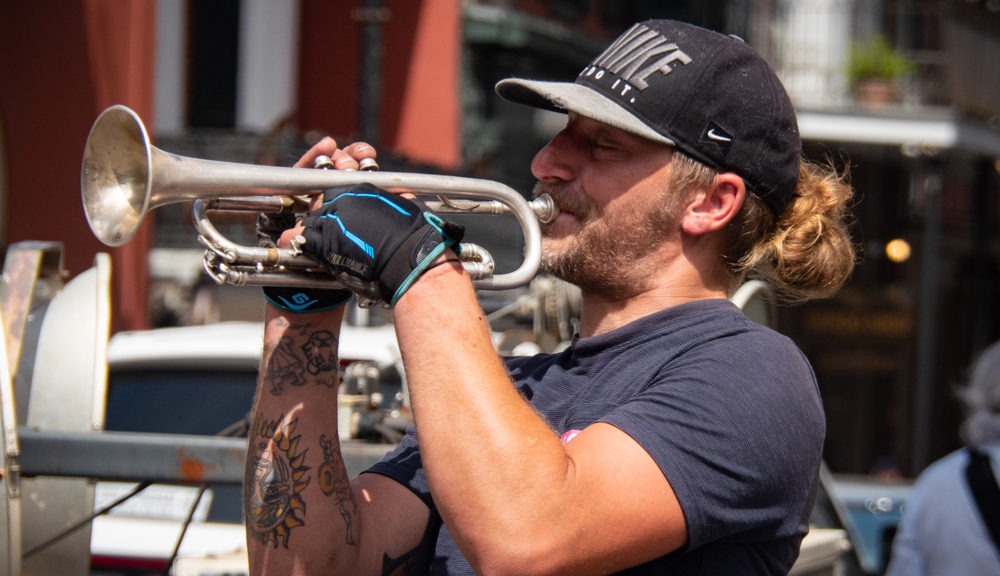
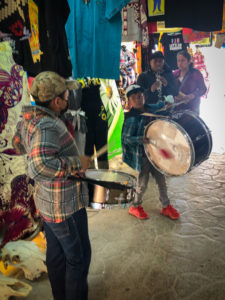
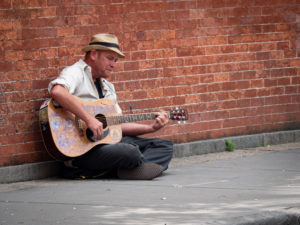
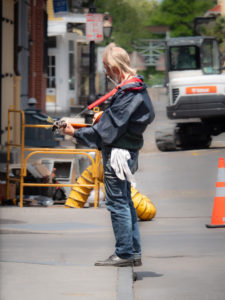
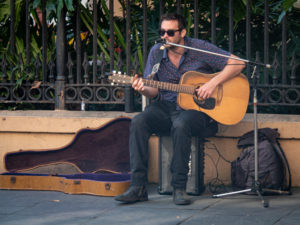
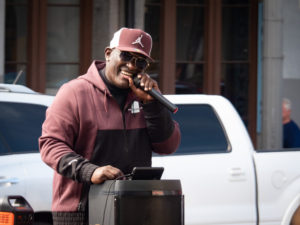 This guy had his karaoke music playing and was singing his heart out for a buck.
This guy had his karaoke music playing and was singing his heart out for a buck.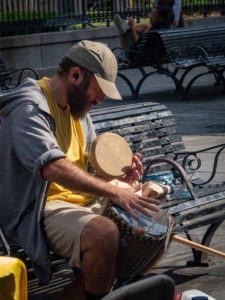 And some were just playing for themselves.
And some were just playing for themselves.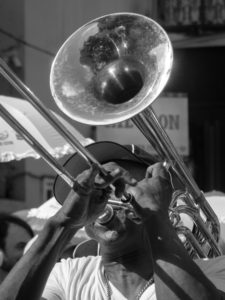
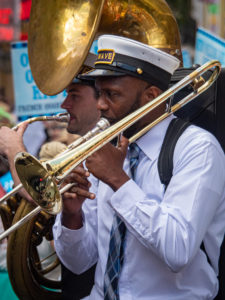
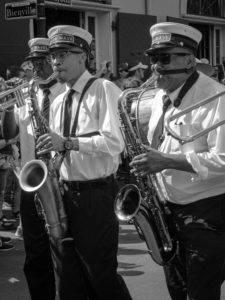
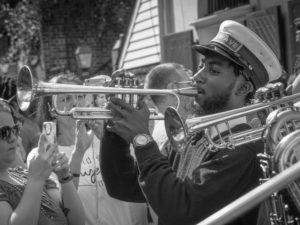
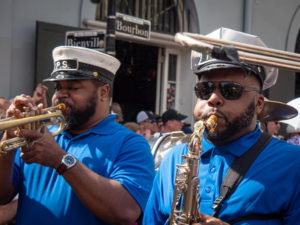
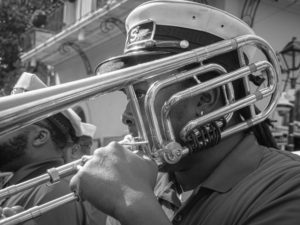
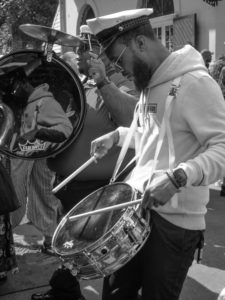
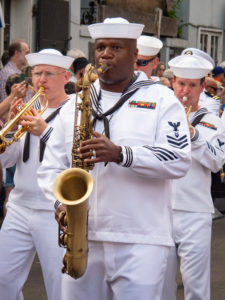
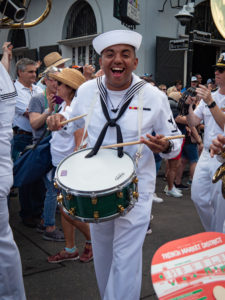
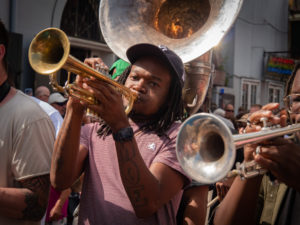
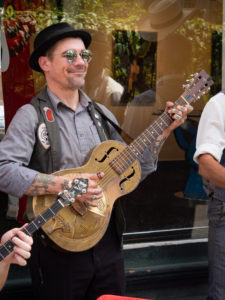
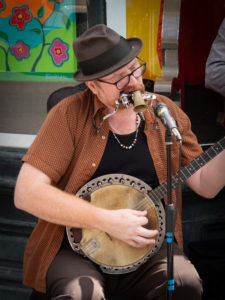
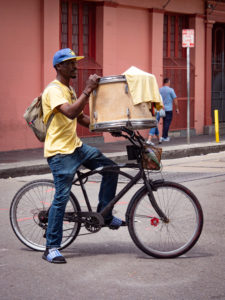 Raw talent if you ask me, riding a bike with this big drum.
Raw talent if you ask me, riding a bike with this big drum.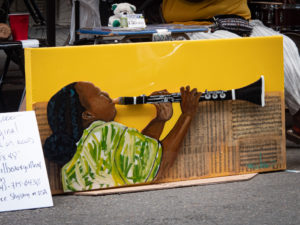
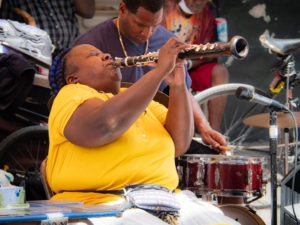
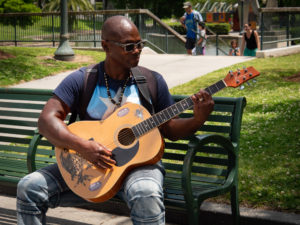 We ran into Mai-Mai (My-My?) near some statues in Armstrong Park. He was just hanging out on the park bench, chatting with people and playing his guitar. We listened and talked with him for a while. Such a sweet man.
We ran into Mai-Mai (My-My?) near some statues in Armstrong Park. He was just hanging out on the park bench, chatting with people and playing his guitar. We listened and talked with him for a while. Such a sweet man.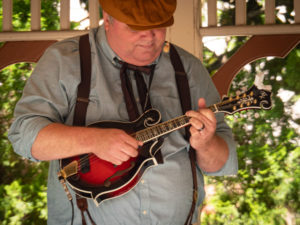 Dollywood had some great Bluegrass bands playing as well. The South definitely did not disappoint in the music department.
Dollywood had some great Bluegrass bands playing as well. The South definitely did not disappoint in the music department.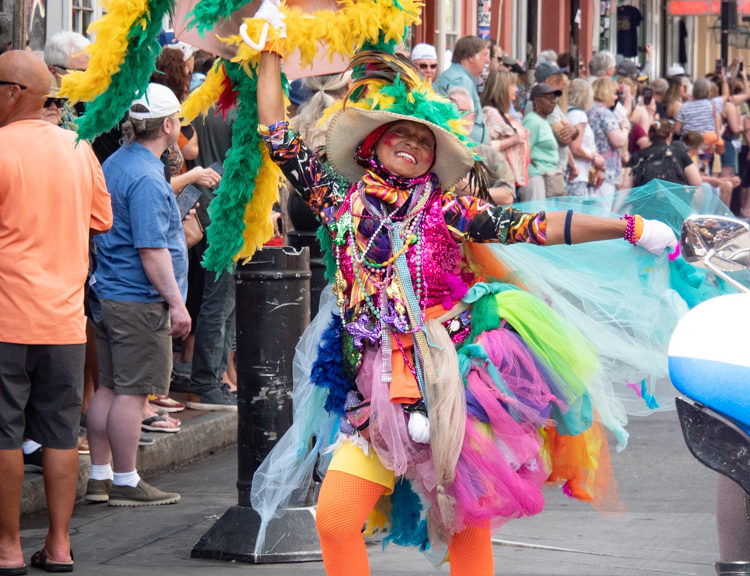
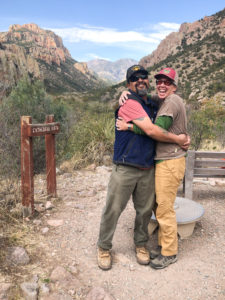 I have known Eddie and Michelle for a LONG time. I met Michelle when she came to work at Killip Elementary School in Flagstaff in maybe 2000? Two years later I got a cancelation for a Grand Canyon River Trip and they joined us. Later that fall, in October 2002, Ellen and I got married and we fashioned our wedding after theirs from the previous year. So, our anniversary is one year and one week later than this sweet couple.
I have known Eddie and Michelle for a LONG time. I met Michelle when she came to work at Killip Elementary School in Flagstaff in maybe 2000? Two years later I got a cancelation for a Grand Canyon River Trip and they joined us. Later that fall, in October 2002, Ellen and I got married and we fashioned our wedding after theirs from the previous year. So, our anniversary is one year and one week later than this sweet couple.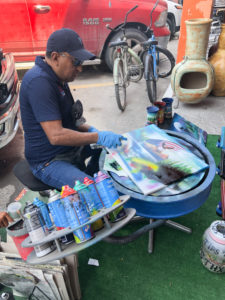 This is a spray paint artist we watched in Progreso, Mexico. He was quite good and I STILL can’t figure out how anyone paints anything worth hanging with spray paint. What talent.
This is a spray paint artist we watched in Progreso, Mexico. He was quite good and I STILL can’t figure out how anyone paints anything worth hanging with spray paint. What talent.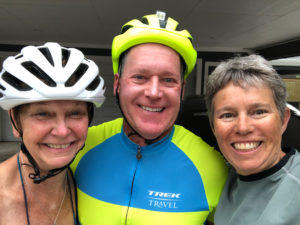
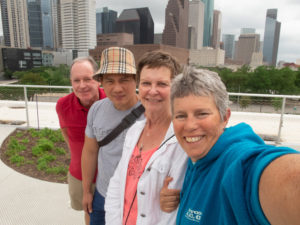
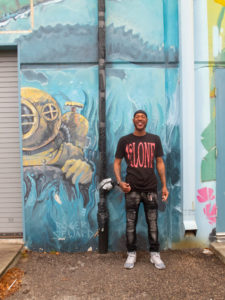
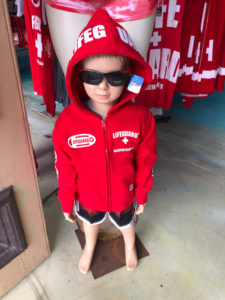 A creepy little guy selling clothing in Galveston.
A creepy little guy selling clothing in Galveston.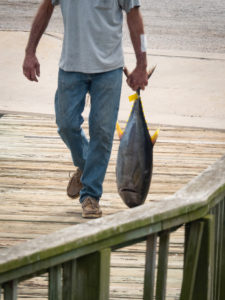 This guy had caught a yellowfin tuna and wanted someone at the fish market to filet it for him but they had already closed for the afternoon so he had to walk his poor tuna back to his boat, dragging its nose along the dock, to filet it himself.
This guy had caught a yellowfin tuna and wanted someone at the fish market to filet it for him but they had already closed for the afternoon so he had to walk his poor tuna back to his boat, dragging its nose along the dock, to filet it himself.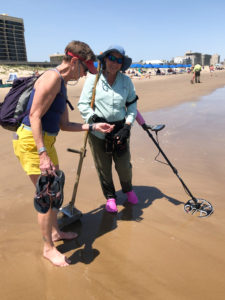 We fund several folks on the South Padre Island Beach searching for treasures.
We fund several folks on the South Padre Island Beach searching for treasures.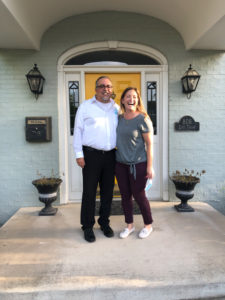 This is the beautiful couple now living in ellen’s childhood home in Harlingen, Tiffany, and Rudy. They were gracious hosts, let us wander into each room, and even sent us off with a Texas treat bag.
This is the beautiful couple now living in ellen’s childhood home in Harlingen, Tiffany, and Rudy. They were gracious hosts, let us wander into each room, and even sent us off with a Texas treat bag.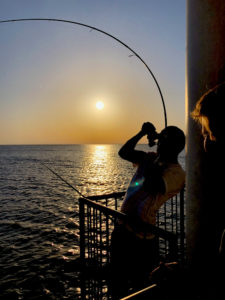 This guy was fishing off the end of the pier at Fountainebleau State Park on Lake Ponchatrain. He caught s small ray of some sort.
This guy was fishing off the end of the pier at Fountainebleau State Park on Lake Ponchatrain. He caught s small ray of some sort.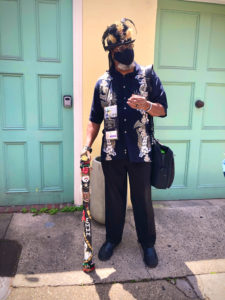
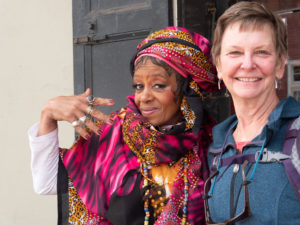
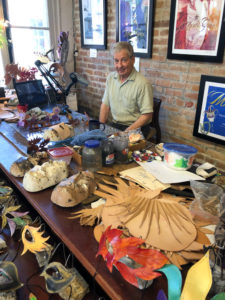 This is the artist who makes the mardi gras masks. They are exquisite.
This is the artist who makes the mardi gras masks. They are exquisite.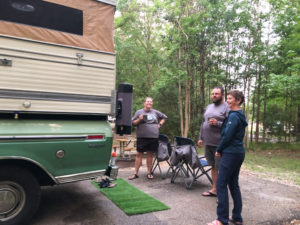 Back at camp, we were approached by Erin who invited us back to her pad to meet Andy. They own the only Four Wheel Camper in the south! Ok, probably not but it’s the only other one we saw once we left Arizona. It’s an early 1990s Granby on a ’73 Ford 100. They live in it full time and travel in between Amazon warehouse jobs. Quite the interesting couple.
Back at camp, we were approached by Erin who invited us back to her pad to meet Andy. They own the only Four Wheel Camper in the south! Ok, probably not but it’s the only other one we saw once we left Arizona. It’s an early 1990s Granby on a ’73 Ford 100. They live in it full time and travel in between Amazon warehouse jobs. Quite the interesting couple.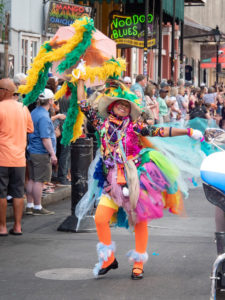 I first saw this colorful character coming from behind us, walking down a side street toward the parade. Once she was in front of all the bands she came alive and began dancing along with the music as she made her way down the avenue.
I first saw this colorful character coming from behind us, walking down a side street toward the parade. Once she was in front of all the bands she came alive and began dancing along with the music as she made her way down the avenue.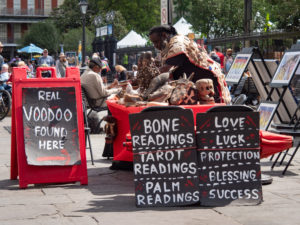 Only in New Orleans…
Only in New Orleans…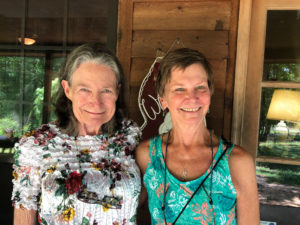 We stopped to visit ellen’s sister Ruth who happened to be staying with her son and daughter-in-law in Poplar, Mississippi.
We stopped to visit ellen’s sister Ruth who happened to be staying with her son and daughter-in-law in Poplar, Mississippi.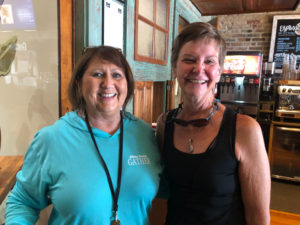 THIS was an interesting conversation. We stopped in this coffee shop in Houston, MS looking for help in finding the road and house Ellen and her family lived in 1969-70ish. Ellen mentioned the high school where she was a freshman and this lady lowered her voice and said, in a soft southern accent, that the old high school had burned down in 1973 under suspicious circumstances. When we asked what happened she lowered her voice, even more, looked around, and said that was the year they elected their first Black homecoming queen. Yikes!
THIS was an interesting conversation. We stopped in this coffee shop in Houston, MS looking for help in finding the road and house Ellen and her family lived in 1969-70ish. Ellen mentioned the high school where she was a freshman and this lady lowered her voice and said, in a soft southern accent, that the old high school had burned down in 1973 under suspicious circumstances. When we asked what happened she lowered her voice, even more, looked around, and said that was the year they elected their first Black homecoming queen. Yikes!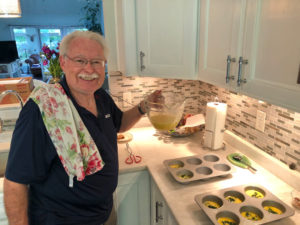
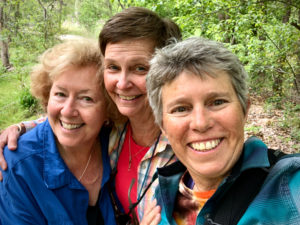
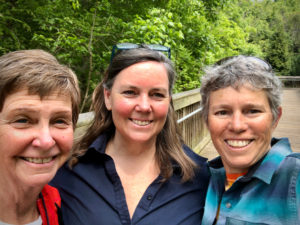
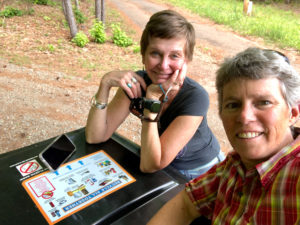
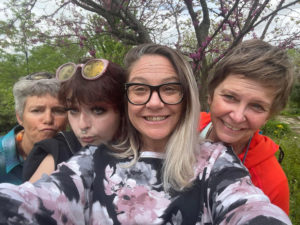 Evonne and Akacia showed us their favorite places.
Evonne and Akacia showed us their favorite places. Rob spends a lot of time on his craft as a tattoo artist.
Rob spends a lot of time on his craft as a tattoo artist.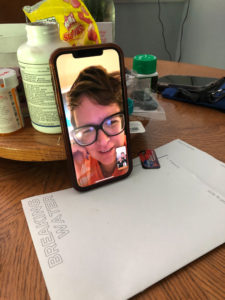 Chelsea joined us for Mother’s Day morning coffee.
Chelsea joined us for Mother’s Day morning coffee.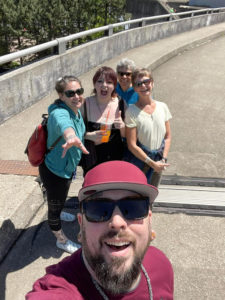 Rob got to join us on a sunny day downtown.
Rob got to join us on a sunny day downtown. We went to Evonne’s place of work on our way out of town at the end of the week. They all love her there.
We went to Evonne’s place of work on our way out of town at the end of the week. They all love her there.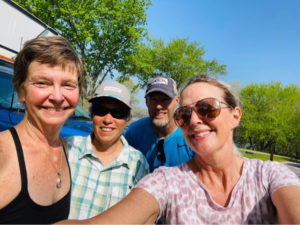 We met these two lovely folks at Sugar Bottom Campground outside of Iowa City. We hope to run into them again in our adventures.
We met these two lovely folks at Sugar Bottom Campground outside of Iowa City. We hope to run into them again in our adventures.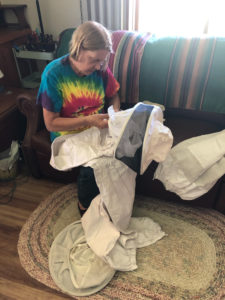 We spent two days at the family farm in Nebraska where we extracted honey from bee boxes with this amazing lady, Becky Puncochar, my half-brother’s Aunt. We also learned about and got to ride a folding bike which we have incorporated into our camping rig, and got to wander down by the Platt River with Jonathan who came to visit from Denver for the weekend. It was a busy two days.
We spent two days at the family farm in Nebraska where we extracted honey from bee boxes with this amazing lady, Becky Puncochar, my half-brother’s Aunt. We also learned about and got to ride a folding bike which we have incorporated into our camping rig, and got to wander down by the Platt River with Jonathan who came to visit from Denver for the weekend. It was a busy two days.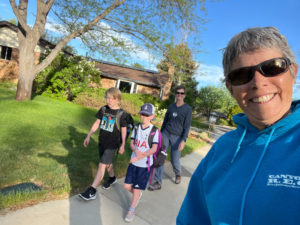 Our final stop was Denver where we got to walk the niece and nephew to school.
Our final stop was Denver where we got to walk the niece and nephew to school.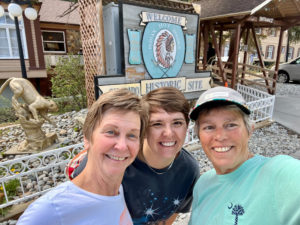 Hang out with Chelsea in Idaho Springs and hot tub.
Hang out with Chelsea in Idaho Springs and hot tub.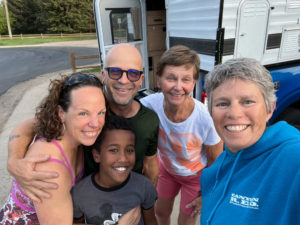 Have dinner with the Prow family. I taught with Laura at Killip in Flagstaff some years ago. Timothy is a master plumber and Nate hales from Ethiopia. We love this framily.
Have dinner with the Prow family. I taught with Laura at Killip in Flagstaff some years ago. Timothy is a master plumber and Nate hales from Ethiopia. We love this framily.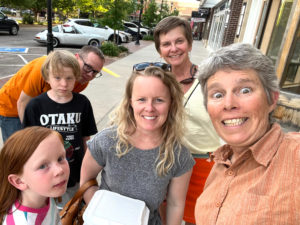 We had days mostly to ourselves as Chelsea took the week off but got sick and spent time sleeping, everyone else was either at work or school.
We had days mostly to ourselves as Chelsea took the week off but got sick and spent time sleeping, everyone else was either at work or school.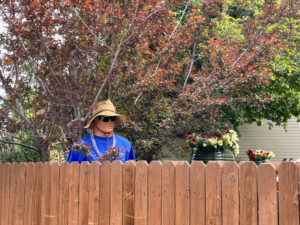 Except for this guy, he seemed to be the neighborhood watch guy. Creepy.
Except for this guy, he seemed to be the neighborhood watch guy. Creepy.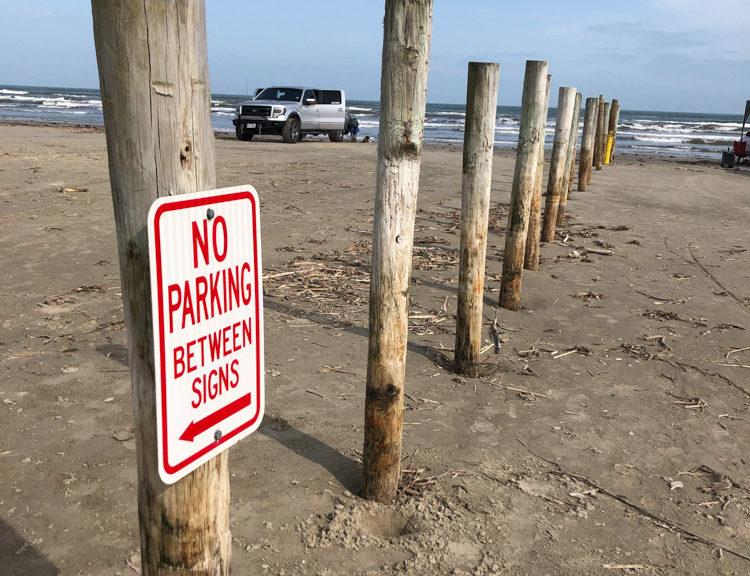
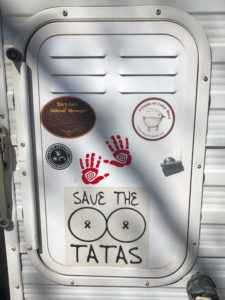
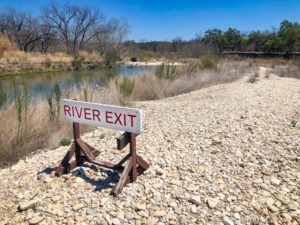 This denotes the location where day floaters can exit the South Llano River near our campground. This image will also show up under Nature. Nature is a HUGE category that I will discuss in September.
This denotes the location where day floaters can exit the South Llano River near our campground. This image will also show up under Nature. Nature is a HUGE category that I will discuss in September.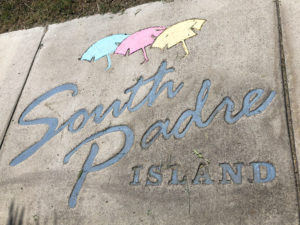 This would show up around town in South Padre Island.
This would show up around town in South Padre Island.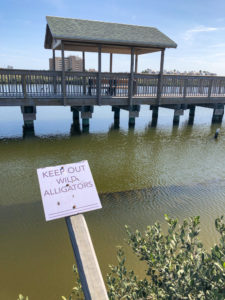 Also on South Padre Island, at the end of the island near the sand dunes was this sign. Ya just don’t see this in Flagstaff. This is another example of the second tag of Nature.
Also on South Padre Island, at the end of the island near the sand dunes was this sign. Ya just don’t see this in Flagstaff. This is another example of the second tag of Nature.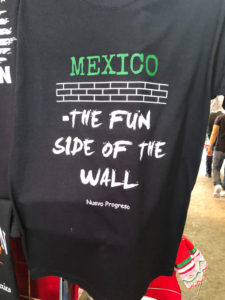 I have more T-shirts than I could ever need so when I see a clever saying on one I SHOOT it!
I have more T-shirts than I could ever need so when I see a clever saying on one I SHOOT it!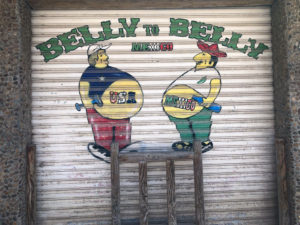 This shop door was also in Progresso and was also tagged under Art.
This shop door was also in Progresso and was also tagged under Art.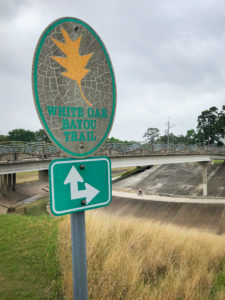 In Houston, I learned about bayous. There are miles and miles of mostly cement trails along the bayous of Houston which apparently are NOT rivers and not quite swamps. By definition, its a body of water typically found in a flat, low-lying area, and may refer to an extremely slow-moving stream or river (often with a poorly defined shoreline), a marshy lake or wetland, or a creek whose current reverses daily due to tides, and which contains brackish water highly conducive to fish life and plankton.
In Houston, I learned about bayous. There are miles and miles of mostly cement trails along the bayous of Houston which apparently are NOT rivers and not quite swamps. By definition, its a body of water typically found in a flat, low-lying area, and may refer to an extremely slow-moving stream or river (often with a poorly defined shoreline), a marshy lake or wetland, or a creek whose current reverses daily due to tides, and which contains brackish water highly conducive to fish life and plankton.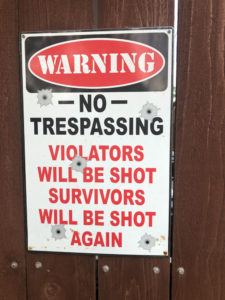 This sign would be more humorous if it wasn’t posted in Texas and in a country ripe with gun violence.
This sign would be more humorous if it wasn’t posted in Texas and in a country ripe with gun violence.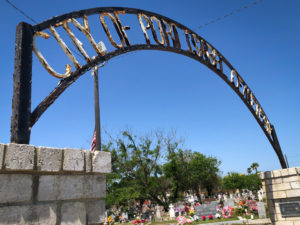 We love cemeteries. This is the sign above the one in Port Isabel.
We love cemeteries. This is the sign above the one in Port Isabel.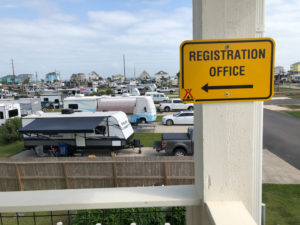 This is in the KOA Holiday Campground in Galveston Definitely not our jam.
This is in the KOA Holiday Campground in Galveston Definitely not our jam.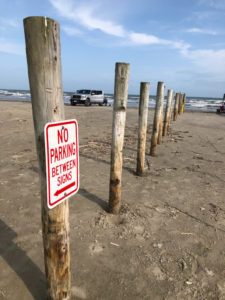 This beach was within walking distance of our KOA Galveston campground, which made it worth it. The beaches in Texas are low, flat and hard packed, perfect for driving and camping on.
This beach was within walking distance of our KOA Galveston campground, which made it worth it. The beaches in Texas are low, flat and hard packed, perfect for driving and camping on.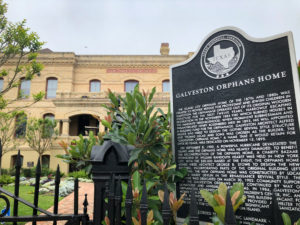 This is another image that is also tagged under Buildings. You probably can’t read it but the story of the Galveston Orphans Home was pretty interesting.
This is another image that is also tagged under Buildings. You probably can’t read it but the story of the Galveston Orphans Home was pretty interesting.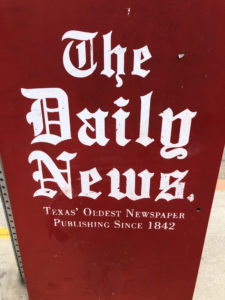 That’s one old newspaper!
That’s one old newspaper!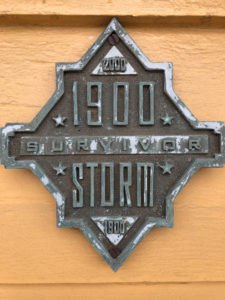 These plaques were posted on many buildings we came across in Galveston. The 1900
These plaques were posted on many buildings we came across in Galveston. The 1900 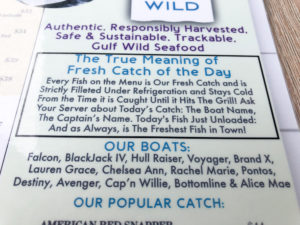 This is info I shot off the menu at Katie’s Seafood Restaurant in Galveston.
This is info I shot off the menu at Katie’s Seafood Restaurant in Galveston.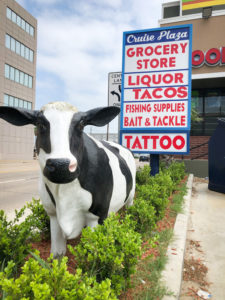 Talk about random. Grocery Store was not quite accurate. It was more of a convenience/sporting goods store.
Talk about random. Grocery Store was not quite accurate. It was more of a convenience/sporting goods store.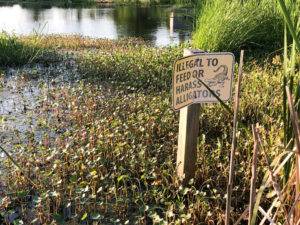 More alligator signs. This one was in the pond near Lake Ponchatrain at our camp in Louisiana. Yet another reason to sleep in a camper!
More alligator signs. This one was in the pond near Lake Ponchatrain at our camp in Louisiana. Yet another reason to sleep in a camper!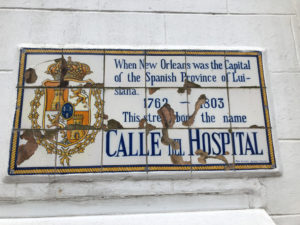 These tiled signs were all over New Orleans and I found them interesting.
These tiled signs were all over New Orleans and I found them interesting.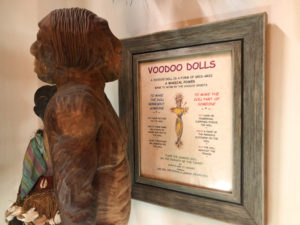 Lots of new information in the Voodoo Museum.
Lots of new information in the Voodoo Museum.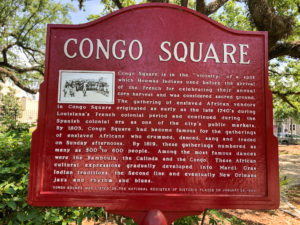 Another fascinating sign with historical information that we came across on our Voodoo Museum Tour. In colonial times, Congo Square was an open-air market where blacks—both enslaved and free—met on “free Sundays” to take part in sacred African rituals, talk, trade, and perform traditional songs and dance, helping lay the foundations for what would later become jazz.
Another fascinating sign with historical information that we came across on our Voodoo Museum Tour. In colonial times, Congo Square was an open-air market where blacks—both enslaved and free—met on “free Sundays” to take part in sacred African rituals, talk, trade, and perform traditional songs and dance, helping lay the foundations for what would later become jazz.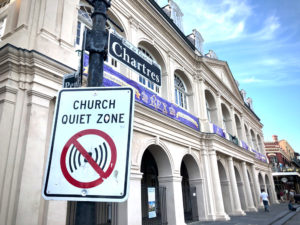 I found this sign to be a bit ironic as this church faces the square where a lot of activity happens during festivals.
I found this sign to be a bit ironic as this church faces the square where a lot of activity happens during festivals.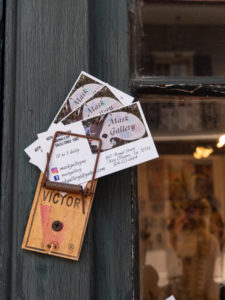 I thought this was a great way to offer business cards on the outside of your door.
I thought this was a great way to offer business cards on the outside of your door.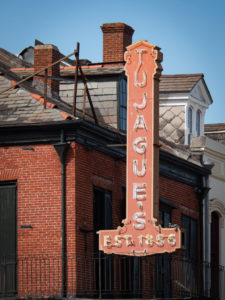
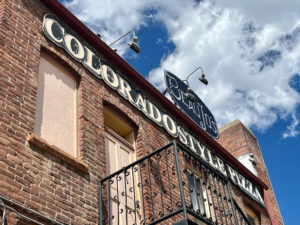
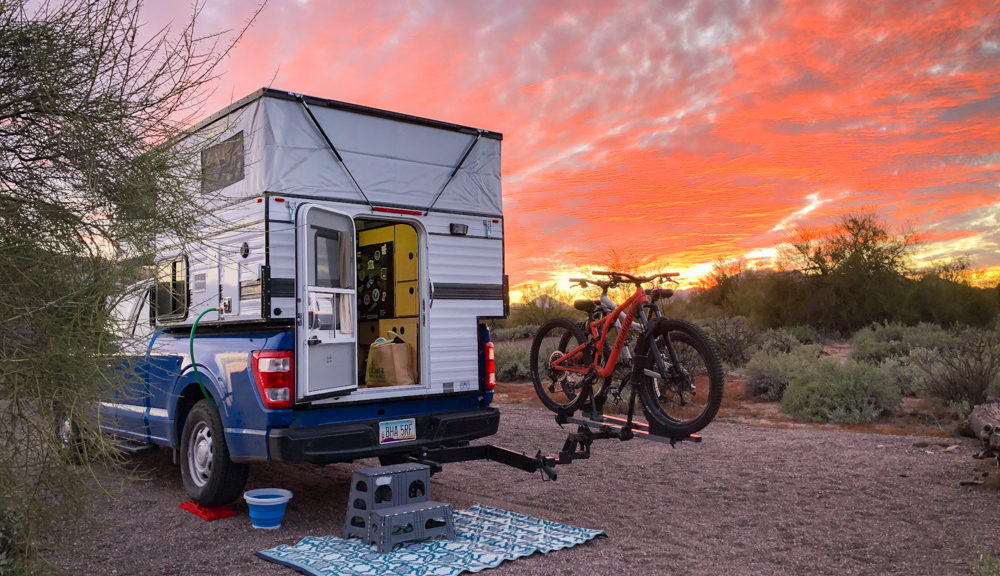
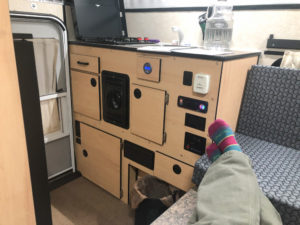
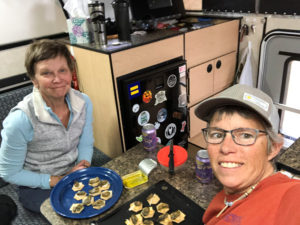
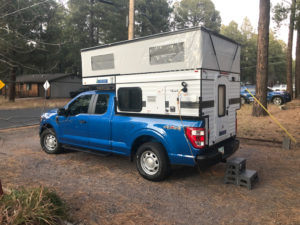
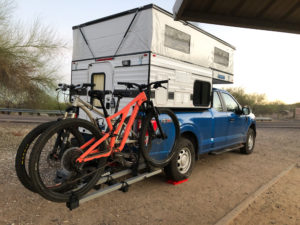
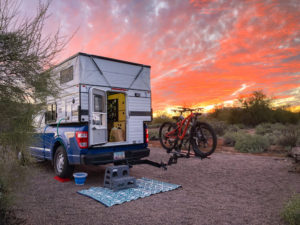
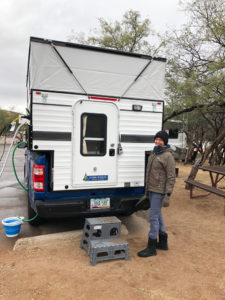 The other item we recently fixed, with the help of our brilliant friend Rod Horn, was the after-market backup camera. Ours disappeared when we took off the tailgate. Rod machined a bracket that goes over the license plate and he was able to attach the backup camera to it. Works like a charm.
The other item we recently fixed, with the help of our brilliant friend Rod Horn, was the after-market backup camera. Ours disappeared when we took off the tailgate. Rod machined a bracket that goes over the license plate and he was able to attach the backup camera to it. Works like a charm.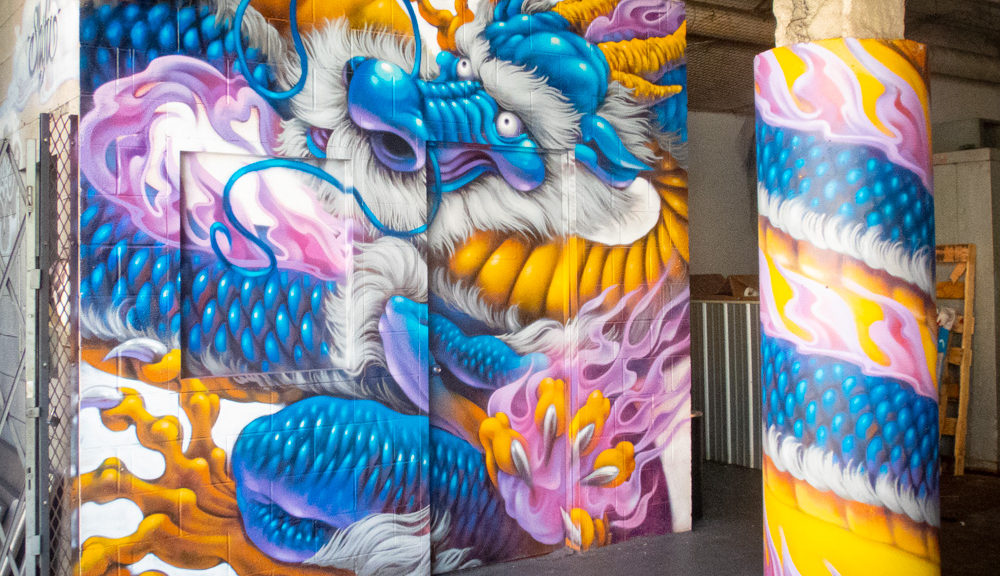
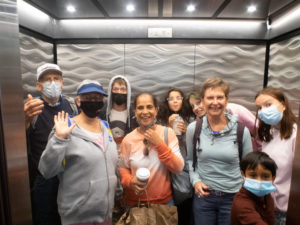 This is the crew we went with: my mom, step-dad, sister-in-law, and her two kids, granddaughter, nephew, and my cousin’s kid. It was a formidable team.
This is the crew we went with: my mom, step-dad, sister-in-law, and her two kids, granddaughter, nephew, and my cousin’s kid. It was a formidable team.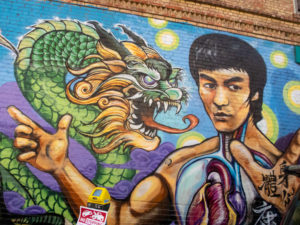
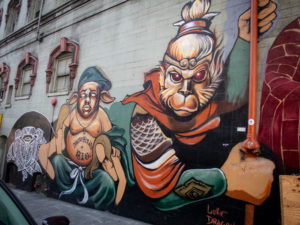
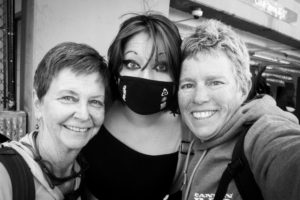 My wife, Ellen, and I with our granddaughter. It was her first trip to see the family in eight years.
My wife, Ellen, and I with our granddaughter. It was her first trip to see the family in eight years.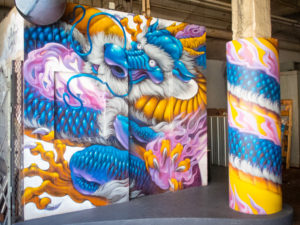 I love wondering unfamiliar cities and finding treasures like this parking garage entrance.
I love wondering unfamiliar cities and finding treasures like this parking garage entrance.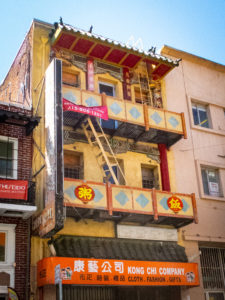
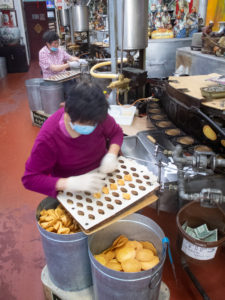 We HAD to stop by the fortune cookie factory!
We HAD to stop by the fortune cookie factory!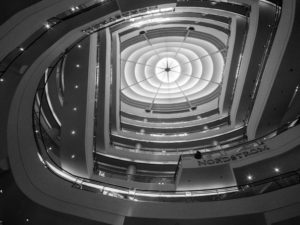
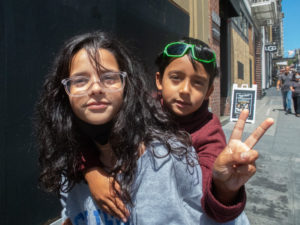 Our two youngest team members were SUCH troopers.
Our two youngest team members were SUCH troopers.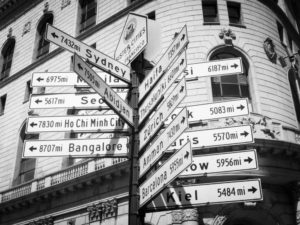 After lunch, we boarded the trolly and headed to Fisherman’s Wharf where we ended the day. From there we walked back to the Ferry Building and headed home.
After lunch, we boarded the trolly and headed to Fisherman’s Wharf where we ended the day. From there we walked back to the Ferry Building and headed home. 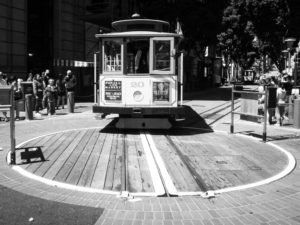
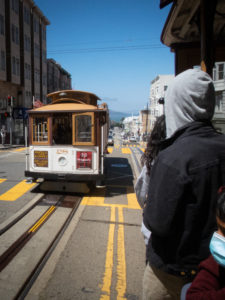
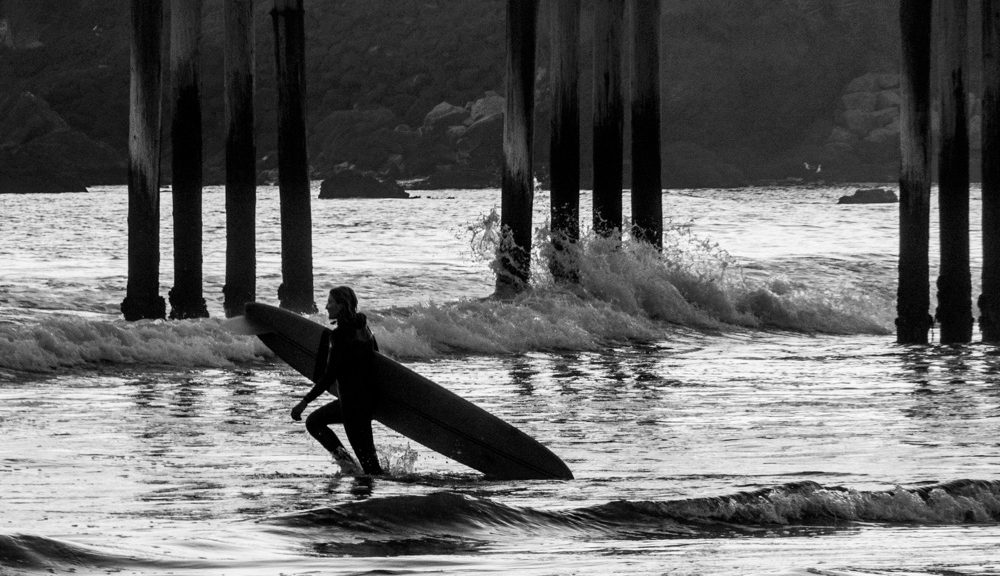
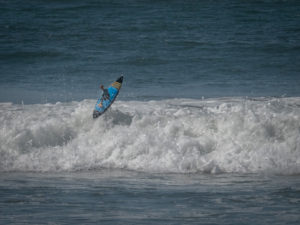
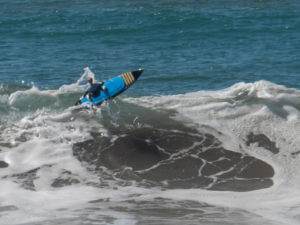
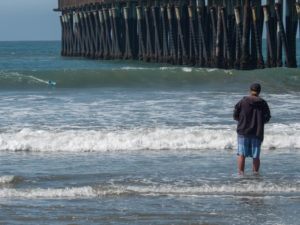
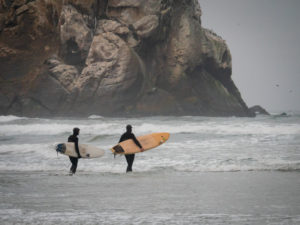 Now, on to the dedication part. The temps were in the high 40’s each morning. These guys were decked in full, hooded wetsuits WITH booties. No thank you. Too cold for this lover of oceans.
Now, on to the dedication part. The temps were in the high 40’s each morning. These guys were decked in full, hooded wetsuits WITH booties. No thank you. Too cold for this lover of oceans.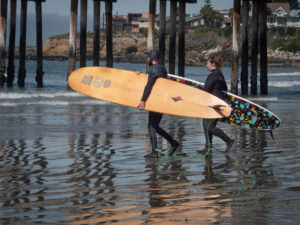 Even in Cayucos, near the pier, in the afternoon temps of mid-60’s, full wetsuits, booties and hoods were the norm.
Even in Cayucos, near the pier, in the afternoon temps of mid-60’s, full wetsuits, booties and hoods were the norm.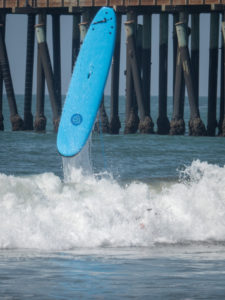
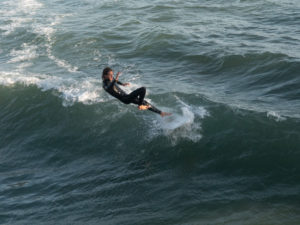
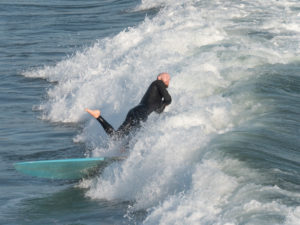
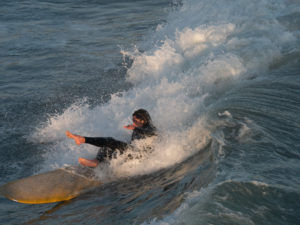
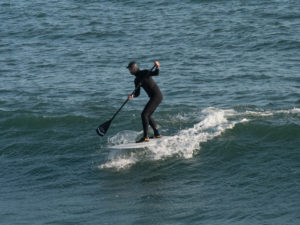
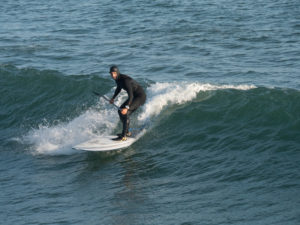
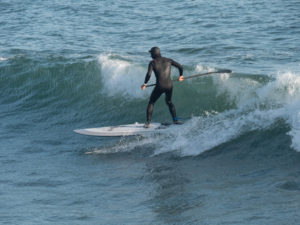
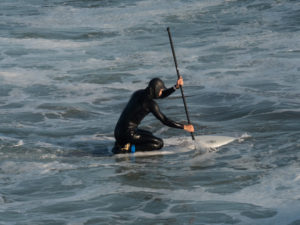
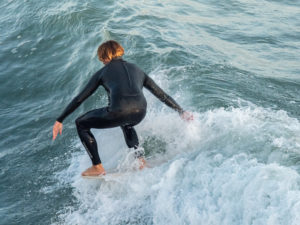
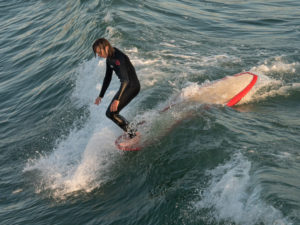
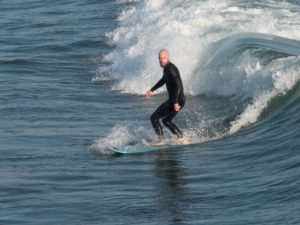
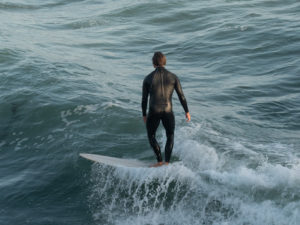
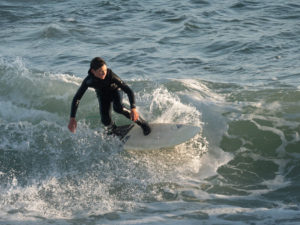 There were a couple of young guys out on their short boards working the waves.
There were a couple of young guys out on their short boards working the waves.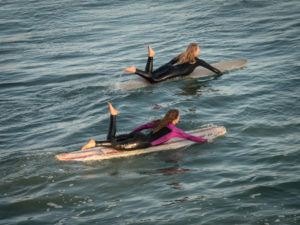 These two joined the mix late in the afternoon. They seriously looked like synchronized swimmers heading out on their boards with pointed toes at the ends of legs that were moving up and down in a rhythmic kicking motion timed to their arm strokes. The boys became less focussed once these two showed up. 😉
These two joined the mix late in the afternoon. They seriously looked like synchronized swimmers heading out on their boards with pointed toes at the ends of legs that were moving up and down in a rhythmic kicking motion timed to their arm strokes. The boys became less focussed once these two showed up. 😉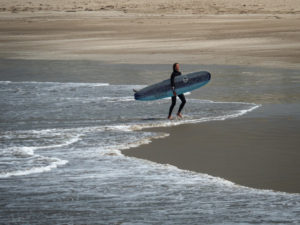 At the end of a session, walking out of the surf on a lonely beach shows the potential solitude of surfing.
At the end of a session, walking out of the surf on a lonely beach shows the potential solitude of surfing.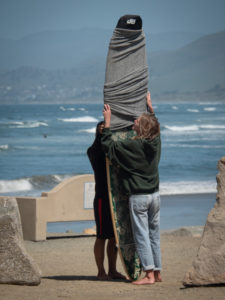 This was new to me. Covering a board before loading it up after a morning in the water.
This was new to me. Covering a board before loading it up after a morning in the water.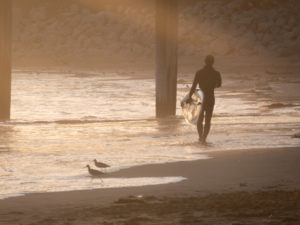 Back in Cayucos, the sun setting and a lone surfer calling it a day.
Back in Cayucos, the sun setting and a lone surfer calling it a day.